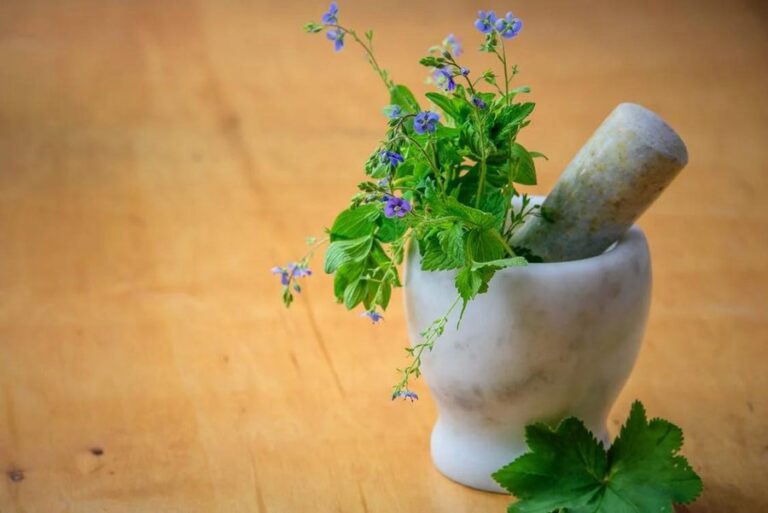Unlocking the Secrets of Diet & Lifestyle in Siddha: Tailoring Your Meals to Your Body Type

Introduction to Siddha Medicine and Its Approach to Diet & Lifestyle
Siddha medicine is one of the oldest traditional healing systems that originated in South India. It is rooted in a holistic understanding of human health, focusing on the balance between body, mind, and spirit. As I delved deeper into the Siddha philosophy, I discovered how it emphasizes the importance of diet and lifestyle tailored to individual body types. This personalized approach can significantly enhance one’s well-being and vitality.
In Siddha, the human body is viewed as a microcosm of the universe, where everything is interconnected. The concept of doshas, or body types, plays a crucial role in determining the most suitable diet and lifestyle for each person. By aligning our nutritional choices with our unique constitution, we can unlock better health and prevent illness. The focus is not merely on what to eat, but also on how and when to eat, incorporating lifestyle practices that promote overall balance.
Throughout this article, I will explore the fundamental principles of Siddha medicine and how I learned to tailor my meals based on my body type. By understanding the links between our constitution and dietary needs, we can embark on a journey toward optimal health, embracing the wisdom of Siddha in our daily lives.

Understanding Body Types in Siddha: The Fundamental Concepts
The Siddha system identifies three primary body types: Vata, Pitta, and Kapha. Each body type is characterized by specific physical, mental, and emotional traits. Understanding these types is essential for anyone seeking to personalize their diet and lifestyle according to Siddha principles.
- Vata: Representing air and space, Vata individuals are often thin, energetic, and creative. They tend to be quick thinkers but can also experience anxiety and dryness. To maintain balance, Vata types benefit from grounding foods that are warm and nourishing.
- Pitta: Associated with fire and water, Pitta individuals are typically strong, ambitious, and driven. They often have a strong digestive fire but can suffer from inflammation and irritability when out of balance. Cooling foods that reduce heat and acidity are essential for Pitta types.
- Kapha: Linked to earth and water, Kapha individuals are generally robust, calm, and nurturing. They have a slower metabolism and may struggle with weight management. To stay balanced, Kapha types should focus on light, stimulating foods that promote energy and vitality.
Understanding these fundamental concepts has allowed me to identify my body type and make conscious choices about my diet and lifestyle. Each person has a unique combination of these types, and recognizing this individuality is vital for achieving optimal health.
The Links Between Body Type and Dietary Needs
In Siddha, the link between body type and dietary needs is paramount. Each body type has specific nutritional requirements that can either promote health or lead to imbalance. By understanding these links, I have learned to select foods that resonate with my constitution, thereby enhancing my well-being.
For example, Vata types require foods that are nourishing and moist to counteract their natural dryness. Incorporating warm soups, stews, and healthy fats like ghee helps to stabilize their energy. On the other hand, Pitta individuals benefit from cooling foods such as cucumbers, melons, and leafy greens. These foods help to soothe the fiery nature of Pitta and maintain a balanced state.
Kapha types, in contrast, need lighter foods that stimulate their metabolism. Incorporating spices like ginger and turmeric can help invigorate their digestive fire, while avoiding heavy, oily foods can prevent stagnation. By aligning my food choices with my body type, I have experienced increased energy levels, improved digestion, and overall better health.
Foods to Embrace Based on Your Body Type
Vata Body Type: Foods to Embrace
For those with a Vata constitution, it is essential to focus on grounding and nourishing foods. Here is a list of foods that I have found beneficial for balancing Vata:
- Warm, cooked meals: Soups, stews, and casseroles made with whole grains like rice and quinoa.
- Healthy fats: Ghee, olive oil, and avocados add moisture and richness to meals.
- Sweet and nourishing fruits: Bananas, figs, and dates are excellent choices for Vata types.
Pitta Body Type: Foods to Embrace
Pitta individuals thrive on cooling foods that help mitigate their natural heat. I recommend including the following in your diet:
- Fresh fruits and vegetables: Watermelon, cucumber, and leafy greens provide hydration and cooling effects.
- Mild grains: Barley and basmati rice are excellent options for Pitta types.
- Dairy products: Milk and yogurt can be beneficial, but should be consumed in moderation.
Kapha Body Type: Foods to Embrace
For Kapha types, it is crucial to consume light and stimulating foods to invigorate the body. Here are some suggestions:
- Spicy foods: Incorporating spices like ginger, black pepper, and cayenne pepper can stimulate digestion.
- Light grains: Opt for quinoa, barley, and millet, which are less dense than wheat.
- Fruits and vegetables: Apples, pears, and leafy greens help to energize and detoxify the body.
By embracing foods tailored to our body type, we can enhance our vitality and overall health. I have personally witnessed the transformative power of food choices, and I encourage everyone to explore the options that resonate with their unique constitution.
Foods to Avoid: Tailoring Your Diet for Optimal Health
Just as it is important to embrace certain foods, it is equally crucial to understand which foods to avoid based on our body type. This knowledge can prevent imbalances and promote optimal health.
Vata Body Type: Foods to Avoid
Vata individuals should steer clear of foods that exacerbate dryness and anxiety. Here are some foods to limit or avoid:
- Raw foods: Salads and raw vegetables can increase Vata’s coolness and dryness.
- Caffeine and stimulants: These can lead to increased anxiety and restlessness.
- Bitter and astringent foods: Foods like kale and certain legumes may aggravate Vata’s natural qualities.
Pitta Body Type: Foods to Avoid
For Pitta types, avoiding foods that generate heat is essential. Here are some foods to limit:
- Spicy and acidic foods: Hot peppers, tomatoes, and citrus fruits can intensify Pitta’s heat.
- Fried and oily foods: These can lead to inflammation and digestive issues.
- Alcohol and caffeine: Both can exacerbate Pitta imbalances.
Kapha Body Type: Foods to Avoid
Kapha individuals should focus on avoiding heavy and rich foods that can lead to stagnation. Here are some foods to limit:
- Dairy products: Milk, cheese, and ice cream can increase Kapha’s heaviness and mucus.
- Processed foods: High-fat and sugary snacks can lead to weight gain and lethargy.
- Sweet and heavy foods: Foods like pastries and sugary desserts should be consumed sparingly.
By tailoring our diets to exclude foods that may trigger imbalances, we can pave the way for better health and well-being. This approach has allowed me to feel more energized and balanced in my daily life.
The Role of Lifestyle in Siddha: Beyond Diet
Siddha medicine does not solely focus on diet; it also emphasizes the importance of lifestyle practices. I have come to appreciate how our daily routines and habits profoundly impact our overall health. By aligning our lifestyle with our body type, we can achieve greater harmony.
Daily Routines for Different Body Types
Siddha advocates for daily routines (dinacharya) that suit each body type. Here’s how I adapted my daily practices based on my constitution:
- Vata: To balance Vata, I prioritize routine. I wake up early, engage in calming yoga, and practice mindfulness to ground my energy. Staying hydrated with warm herbal teas is also crucial.
- Pitta: Pitta individuals benefit from cooling practices. I recommend starting the day with gentle exercises, avoiding excessive heat exposure, and incorporating relaxation techniques like meditation to soothe the mind.
- Kapha: For Kapha types, stimulating activities are essential. I engage in vigorous workouts, prioritize morning routines, and maintain an active social life to combat lethargy.
Common Lifestyle Practices
In addition to daily routines, Siddha emphasizes practices like meditation, yoga, and self-massage (abhyanga). These practices have helped me cultivate mindfulness, reduce stress, and enhance my overall well-being. Here are some practices I recommend:
- Meditation: A few minutes of meditation daily can help center the mind and reduce stress.
- Yoga: Tailored yoga practices can help balance each body type, promoting flexibility and strength.
- Self-massage: Incorporating warm oils can nourish the skin and promote circulation, particularly beneficial for Vata types.
By integrating these lifestyle practices into my daily routine, I have experienced profound shifts in my energy, mood, and overall health.
Common Misconceptions About Siddha Diet & Lifestyle
As I explored Siddha medicine, I encountered several misconceptions that often cloud understanding of its principles. It is important to address these misconceptions to foster a deeper appreciation of this ancient system.
- Siddha is only about herbs: While herbal remedies play a significant role, Siddha is a comprehensive system that encompasses diet, lifestyle, and holistic practices. It is essential to recognize the interconnection between all these aspects for optimal health.
- One-size-fits-all approach: Many believe that a single diet can suit everyone, but Siddha teaches the importance of personalization. Each individual’s constitution requires a unique approach to diet and lifestyle, emphasizing the need for tailored recommendations.
- Siddha is outdated: Some view traditional systems as irrelevant in modern times. However, Siddha offers timeless wisdom that can complement contemporary health practices, making it highly relevant today.
By dispelling these misconceptions, I have gained a clearer perspective on how Siddha can enrich our lives. Understanding its holistic principles allows us to make informed choices that align with our health goals.
Integrating Siddha Principles into Modern Living
In our fast-paced modern world, integrating Siddha principles into our daily lives can seem challenging. However, I have found that small changes can make a significant difference in enhancing my well-being and health.
Practical Tips for Integration
- Mindful Eating: I prioritize being present during meals, savoring each bite, and listening to my body’s hunger cues. This practice has helped me develop a healthier relationship with food.
- Balanced Routines: I aim to create balanced daily routines that incorporate time for work, relaxation, and self-care. This balance has improved my productivity and overall satisfaction.
- Connecting with Nature: Whenever possible, I spend time outdoors, whether it’s a walk in the park or gardening. Nature has a grounding effect that aligns perfectly with Siddha principles.
Adapting to Individual Needs
Every individual’s journey is unique, and adapting Siddha principles to our specific circumstances is essential. I encourage readers to explore what resonates with them and make gradual changes that support their health. Whether it’s incorporating a new food group or adjusting daily routines, every small step counts.
By integrating these principles into our modern lives, we can cultivate a deeper connection to our bodies and promote lasting health. The wisdom of Siddha medicine provides a solid foundation for achieving balance and vitality.
Conclusion: Personalizing Your Diet & Lifestyle for Better Health
In conclusion, my journey through Siddha medicine has illuminated the profound connection between diet, lifestyle, and health. By understanding our unique body types and tailoring our nutritional choices accordingly, we can unlock the secrets to optimal well-being.
Embracing the principles of Siddha has empowered me to make informed decisions about my health, promoting balance and harmony in my life. I encourage everyone to explore their body type and the foods and practices that resonate with them.
As we navigate our individual health journeys, it is crucial to seek guidance when needed. Using Siddha Without Guidance Can Be Risky – Get Proper Help from Priya Siddha Clinic. This ensures that we make choices that are not only beneficial but safe and effective for our unique constitutions.
By personalizing our diet and lifestyle according to the wisdom of Siddha, we can pave the way for a healthier and more vibrant life.





